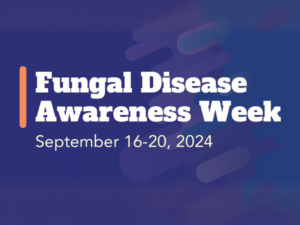Testing and Antifungals: Tackling Fungal Foot Diseases During Fungal Disease Awareness Week
September 16 2024
Fungal Disease Awareness Week is a timely reminder to shed light on an issue that affects millions of people worldwide: fungal infections, particularly those of the foot. Conditions like athlete’s foot, toenail fungus, and other fungal foot infections can be stubborn and tricky to diagnose. Thankfully, advances in testing and antifungal treatments are making it easier to manage these infections effectively. Here’s what you need to know about fungal foot diseases, testing, and antifungal treatments.

Common Fungal Foot Infections
Fungal infections thrive in warm, moist environments, making your feet especially susceptible. The most common types include:
1. Athlete’s Foot (Tinea Pedis): Characterized by itching, burning, and flaking skin, athlete’s foot is a highly contagious fungal infection.
2. Toenail Fungus (Onychomycosis): This causes thickened, discolored, and brittle nails, which can be unsightly and painful.
3. Fungal Skin Infections: Other fungal skin conditions can appear between the toes or on the soles of the feet, leading to irritation, redness, and peeling.
Importance of Testing for Fungal Foot Infections
Many people mistake fungal infections for other conditions like eczema or psoriasis. That’s why accurate testing is crucial for identifying the root cause. Here are the primary testing methods:
– Microscopic Examination: A scraping of the affected area is examined under a microscope to detect the presence of fungal elements.
– Fungal Culture: A sample of the infected tissue or nail is cultured in a lab to identify the exact type of fungus, which is vital for selecting the appropriate antifungal treatment.
– PCR (Polymerase Chain Reaction): This modern test can detect fungal DNA and is more sensitive than traditional methods, allowing for quicker and more accurate diagnosis.
Antifungal Treatments for Foot Infections
Once the fungal infection is diagnosed, treatment usually involves antifungal medications. These can be topical or oral, depending on the severity of the infection.
– Topical Antifungals: Creams, sprays, and powders are often prescribed for mild fungal infections, such as athlete’s foot. Some common options include clotrimazole and terbinafine.
– Oral Antifungals: For more severe or persistent cases, especially toenail fungus, oral antifungal medications like terbinafine or itraconazole may be necessary. These medications penetrate deep into the nail and skin tissues, offering a more comprehensive solution.
– Laser Treatments: In stubborn cases of toenail fungus, laser therapy is emerging as an effective treatment. The laser targets the fungal cells without damaging the surrounding tissue.
The Importance of Timely Treatment
Fungal foot infections may seem like a minor nuisance at first, but they can progress into more serious conditions if left untreated. In people with diabetes or compromised immune systems, untreated fungal infections can lead to secondary bacterial infections, ulcers, and even more complex health issues.
How to Prevent Fungal Foot Diseases
While antifungals and testing are essential for treating infections, prevention is just as important. To keep your feet healthy and fungus-free:
– Keep your feet dry, especially between the toes.
– Wear breathable, moisture-wicking socks.
– Avoid walking barefoot in communal areas such as gym showers or pools.
– Change socks and shoes regularly to reduce moisture buildup.
– Use antifungal powder or spray in your shoes if you are prone to sweating.
Take the time to check your feet and nails for any signs of fungal infections. If you suspect you might have a fungal foot infection, don’t hesitate to consult a podiatrist for proper testing and treatment. With the right diagnosis and antifungal regimen, you can manage and even prevent future fungal foot problems.
At Family Foot & Leg Center, we are here to help you keep your feet healthy year-round. Contact us for a consultation if you notice any signs of fungal foot disease. Early detection and treatment are key to keeping your feet in top condition!

 Fax: (239) 692-9436
Fax: (239) 692-9436 Tel: 239-430-3668
Tel: 239-430-3668

